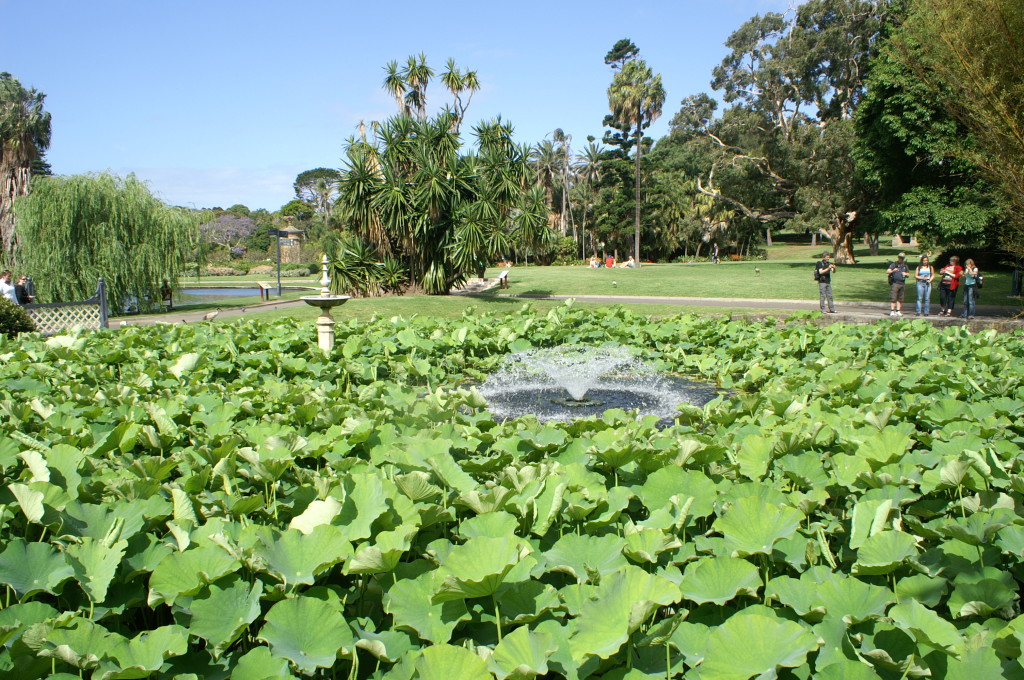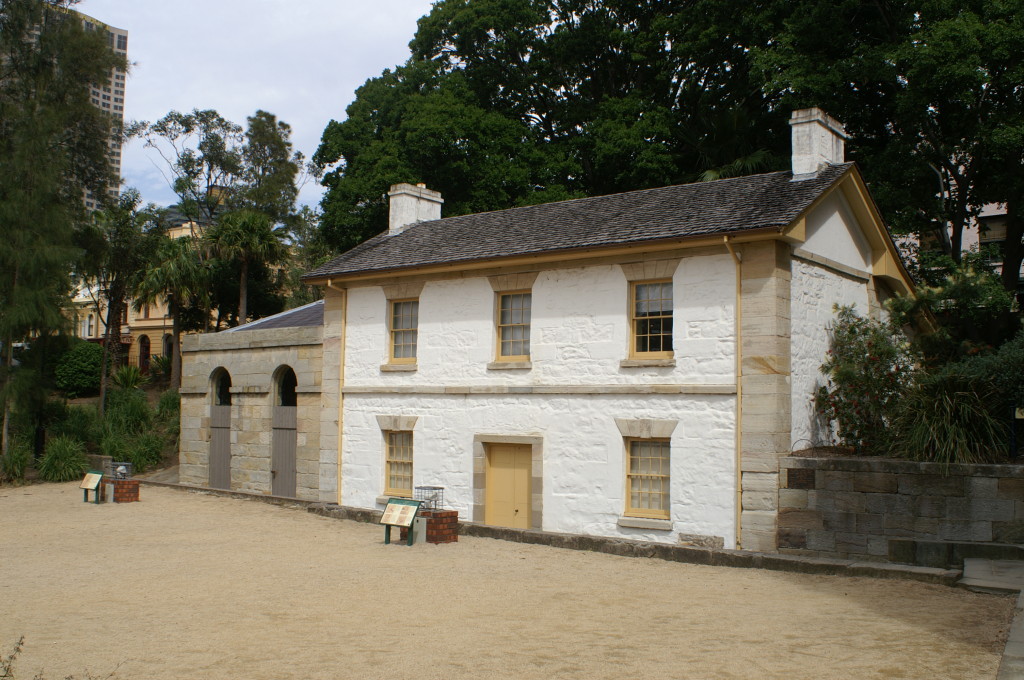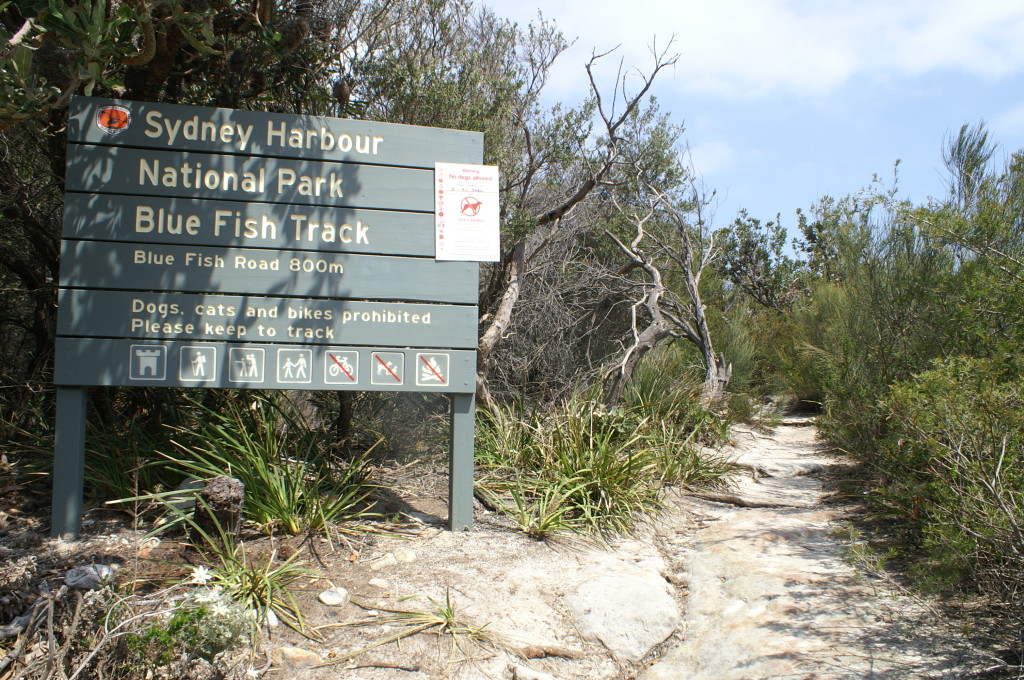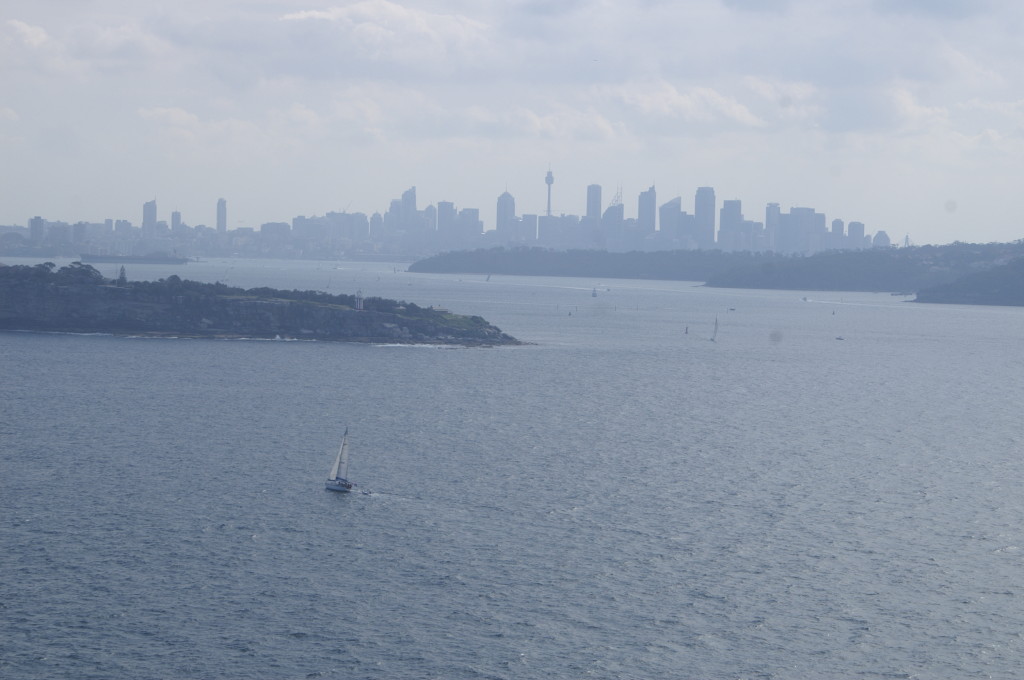This week’s post features photos from the trip and text from Chapter 2. The photo (above) shows the walkway on the eastern side of the Sydney Harbour Bridge from where I took the featured pic in my previous post.
‘… The day started with my favourite Sydney activity. I caught the train to Milsons Point, climbed to Cahill Walk, and set off across the bridge, a great way to see the harbour’s sparkling waters and pretty foreshores. It is nonstop activity, a crisscross pattern of bow waves and stern wash as boats go about their business: ferries and rivercats, water taxis, pilot boats, cruise launches, charter boats and private craft. The bridge is always moving, rumbling with traffic and trains, and expanding and contracting with changing temperatures. I stopped halfway, 60 m above the water, feeling the vibrations of the massive steel structure …’
‘… I reached the southeast bridge pylon and climbed 200 steps to the lookout and visitor centre. … From the pylon lookout I enjoyed panoramic views of the city – the Opera House gleaming against the many greens of the Botanic Gardens, skyscrapers dwarfing Circular Quay, and the bridge arch to the north. In recent times, climbing the bridge has become the thing to do – three groups were going up, one coming down – but the pylon has a display, audio and views – and it’s cheaper. …’
‘I left Cahill Walk and detoured through the historic Rocks precinct. It dates back to the beginning of white settlement following the arrival of the First Fleet in 1788.
Transported convicts were housed here; now it’s where old and new Sydney meet: narrow laneways and worn sandstone stairways slip between two- and three-storey brick terraces against a backdrop of steel and glass high-rise. …’
‘I continued to the Opera House, its white tiles glistening. It was conceived in the late 1940s, a few years after I was, though life for a house of opera didn’t begin until 1955 with an international design competition. Two years later, Danish architect Jørn Utzon
was named the winner. This slow birth of the Opera House was nothing compared to its growing pains, which provided daily fodder for the media. Utzon’s visionary plan baffled designers and engineers for years.’
‘The Royal Botanic Garden is next door. The gardens display a traditional pattern of sweeping lawns interspersed with clumps of botanical exotica, massive shade trees,
quiet nooks, lily ponds, misty fountains and ornate sculptures. Being close to the city, the gardens provide a shady respite for locals and visitors alike.’
‘The flying-fox colony was a sight to see, and smell, and hear – restless and chaotic, the large bats agitating, irritating, stretching, scratching, and folding and unfolding wings.
They couldn’t settle for long before a neighbour would disturb them, causing a noisy spat with teeth bared. Some had both wings outstretched, exposing rufous bellies. …’
‘Nurses Walk, a series of stairways commemorating Sydney’s first hospital, led to Cadman’s Cottage. It was built in 1816 for the government coxswain John Cadman, who
managed the activities and crews of the colony’s boats. The cottage – one of Sydney’s oldest buildings and now a historic site – is now the Sydney Harbour National Park information centre.’
‘Snorkels bubbled and flippers splashed at Shelly Beach, and wetsuited students learnt to scuba dive, while toddlers piddled and paddled in the shallows.’
‘Sydney Harbour National Park is a small area with a big impact, adding a soft green edge to ‘the finest harbour in the world’. I walked the Blue Fish Track, named for the military installations built to protect Sydney.’
‘At North Head Road, I took Fairfax Walk to its namesake lookout, with views along the harbour. Three kayakers struggled in the swell below while a dozen yachts arched in
the breeze, the distant city a histogram of hazy high-rise. Forested headlands and green foreshores framed the cloud-shrouded water.’
That’s it for this week.
Happy travelling









